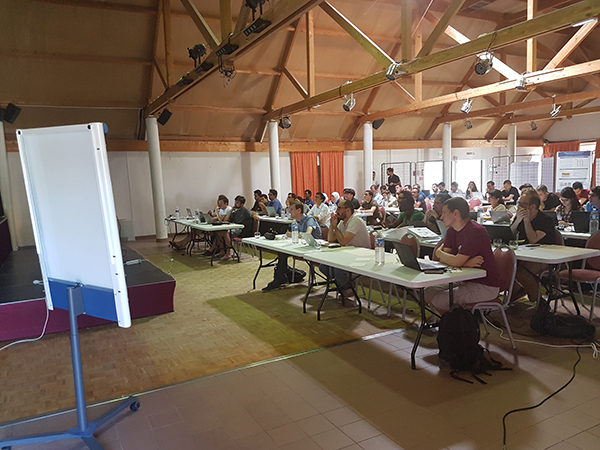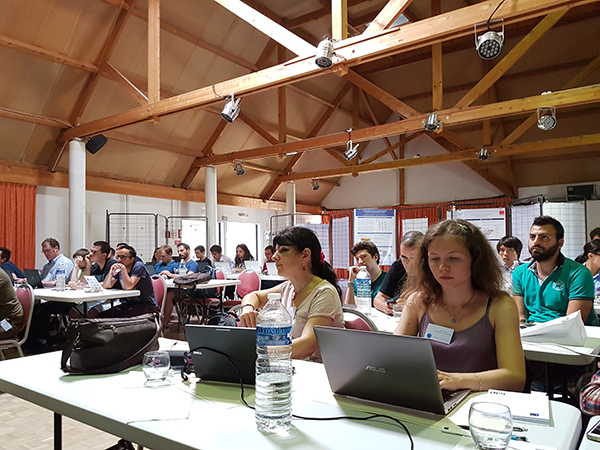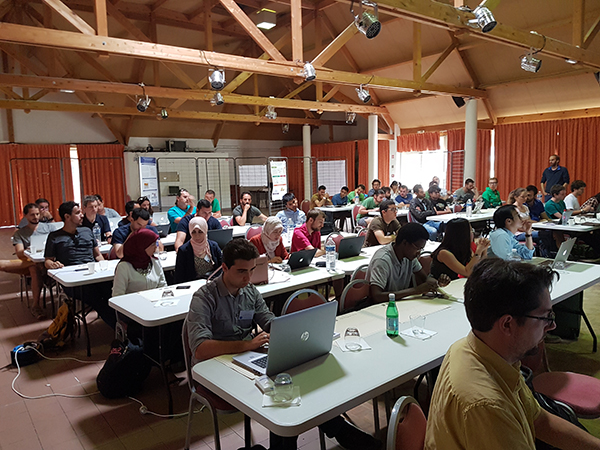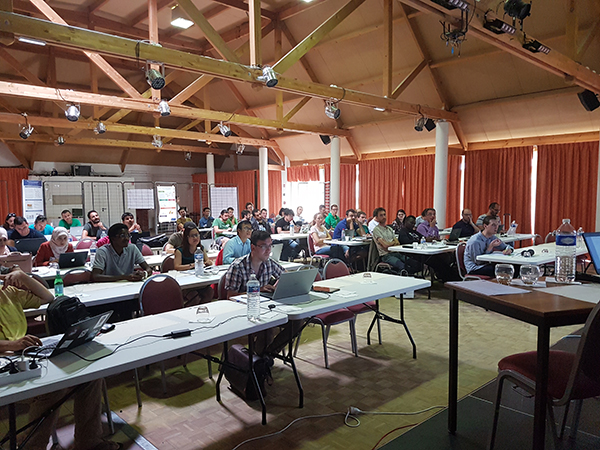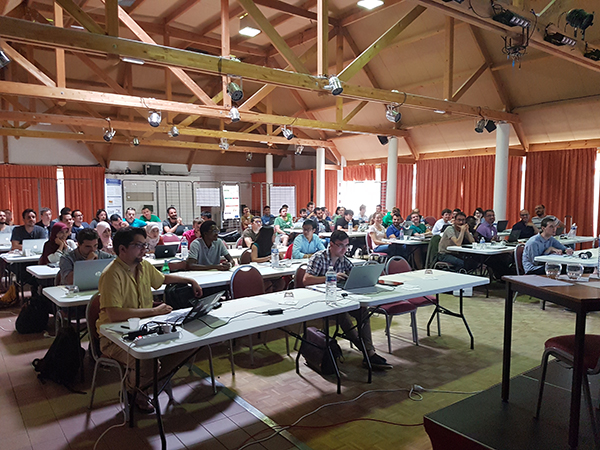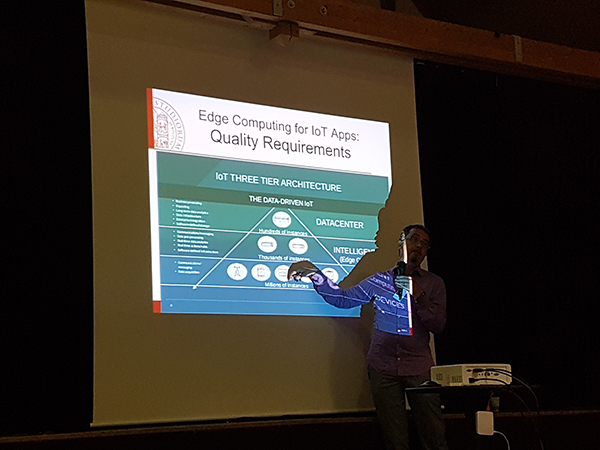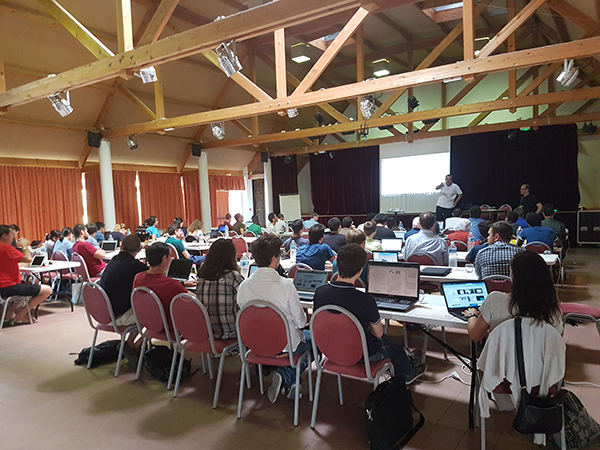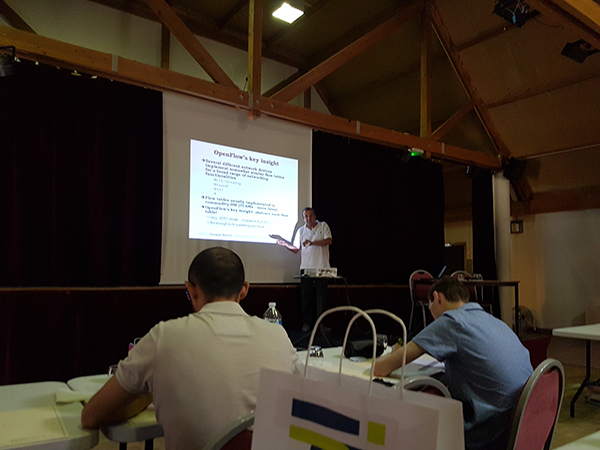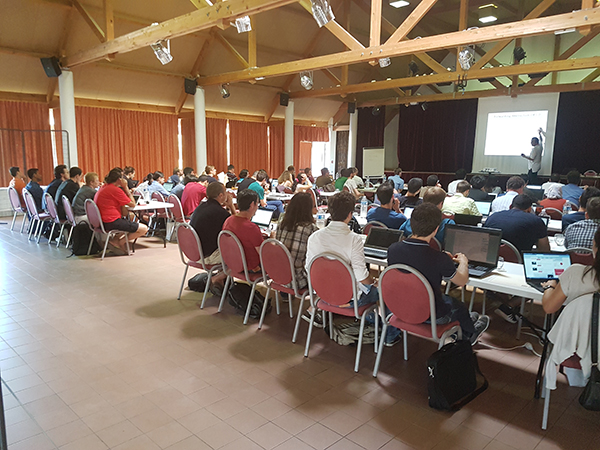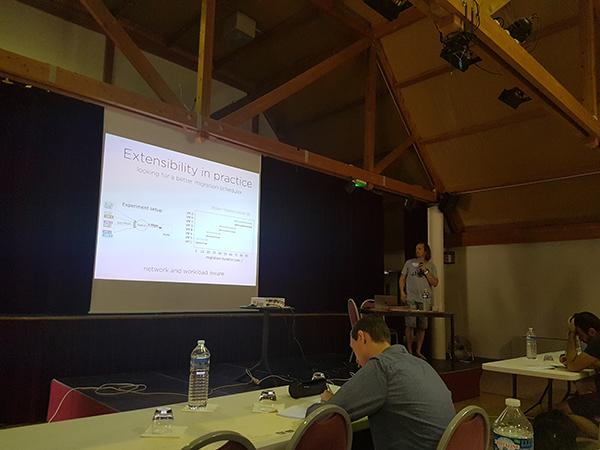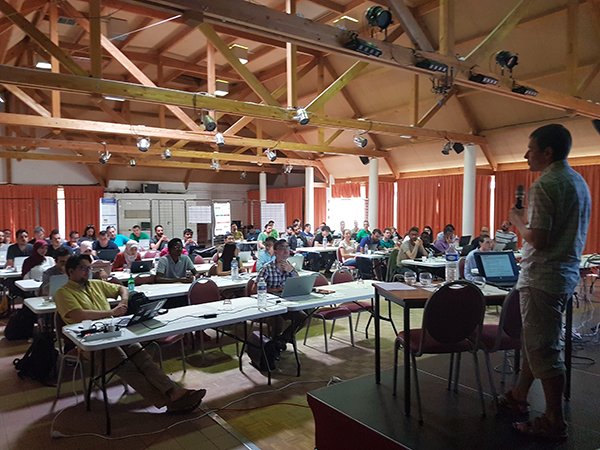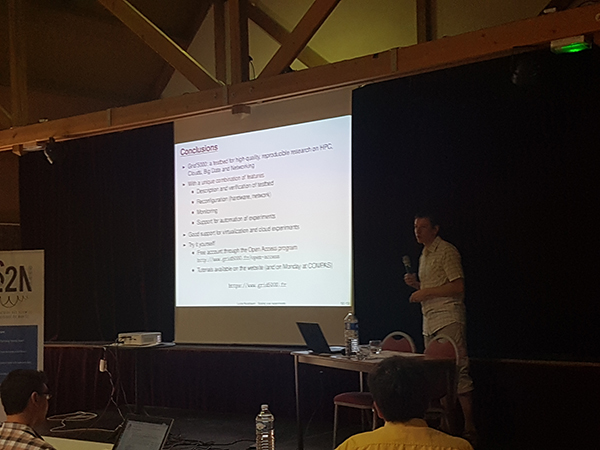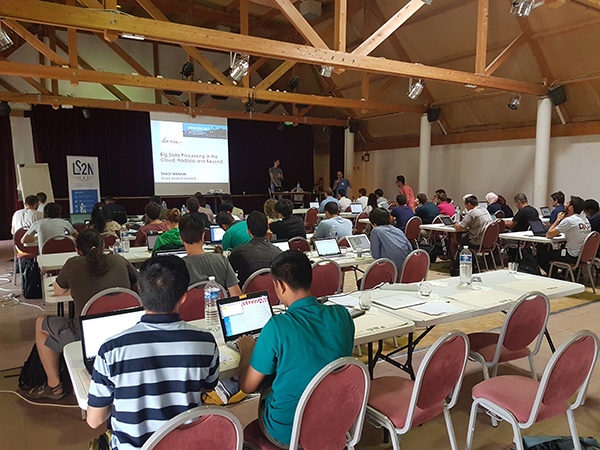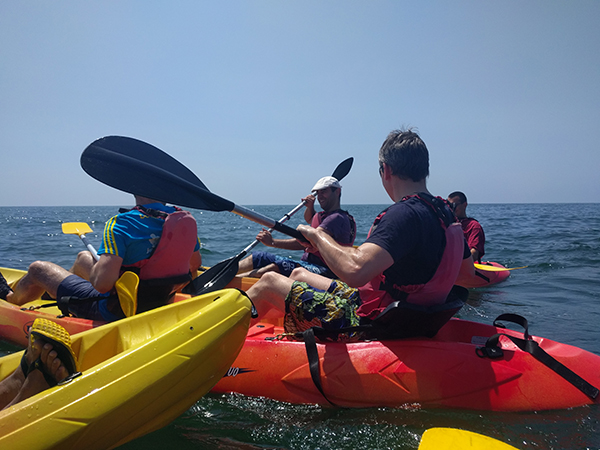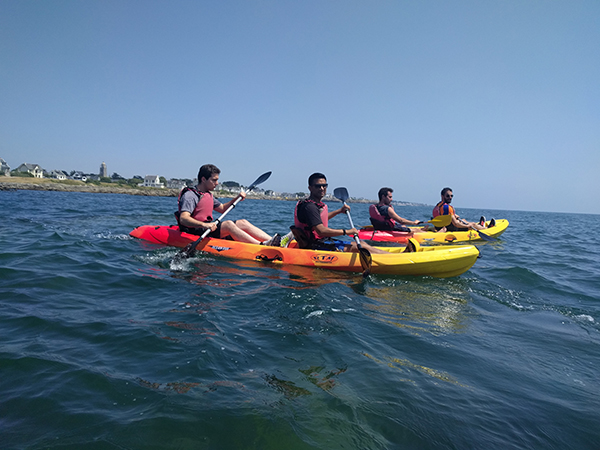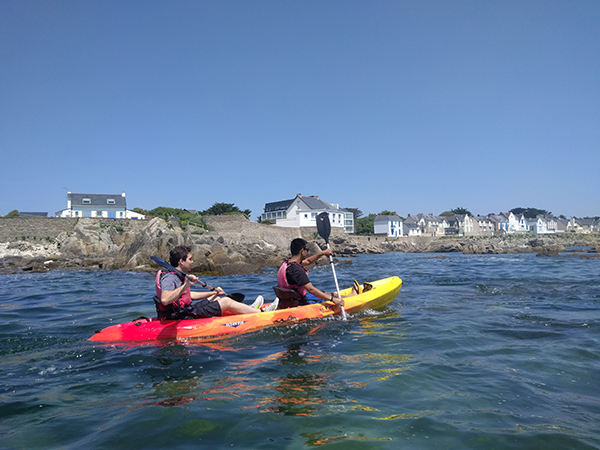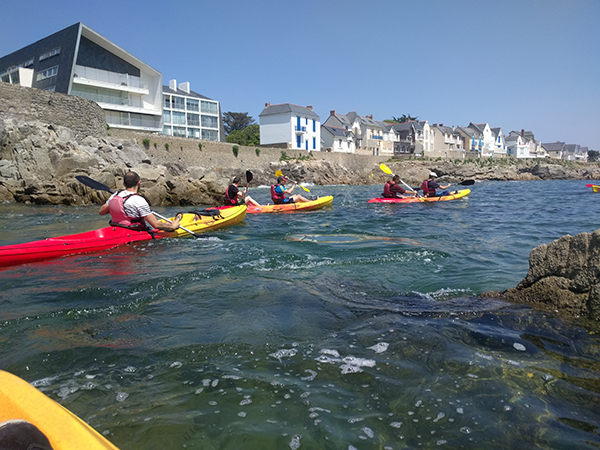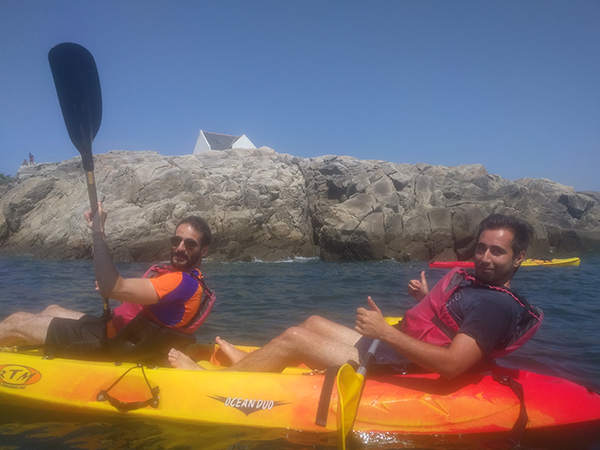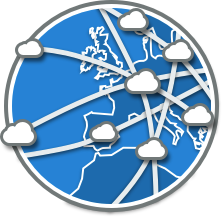 |
RESCOM 2017 |
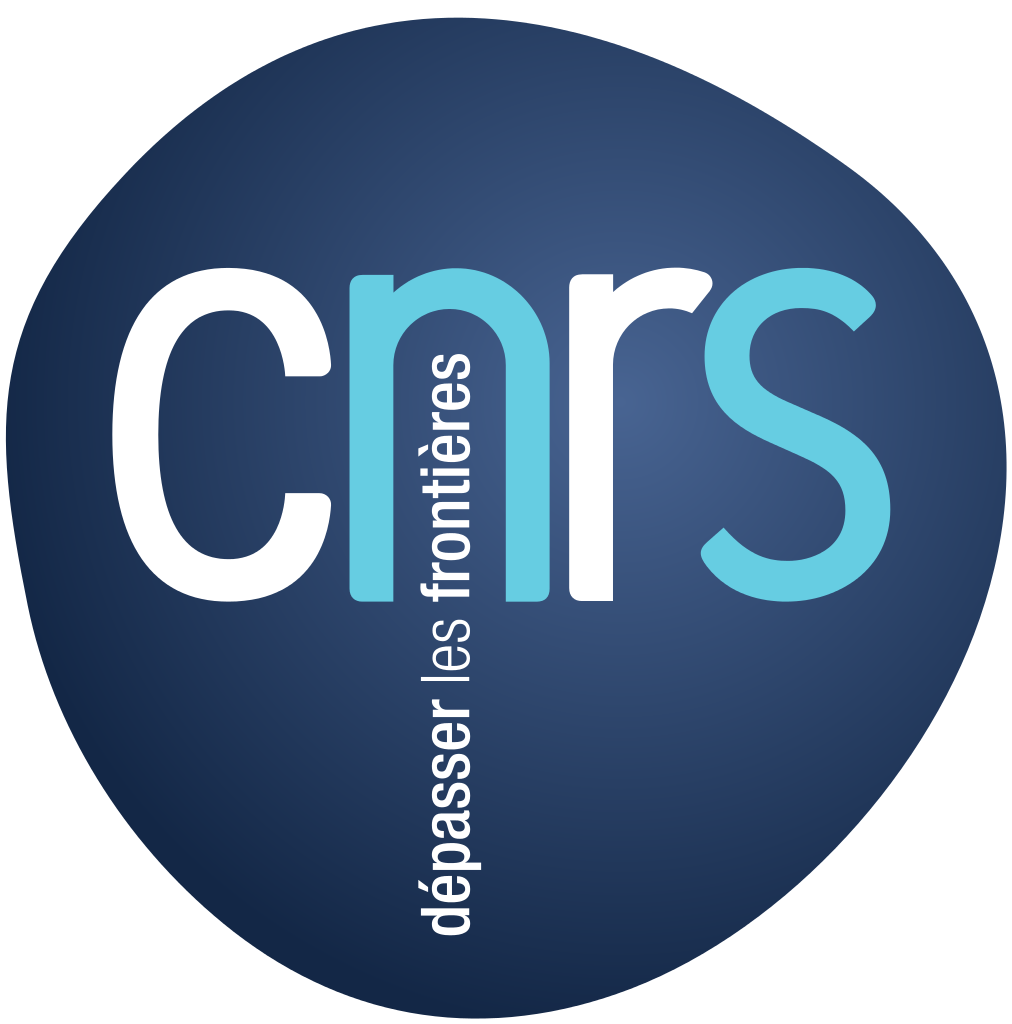 |
Action transverse sur la virtualisation |
RESCOM 2017
Summer school
VIRTUALISATION & DEHARDWARIZATION
June 19-23, 2017
Le Croisic, France
Organized in the framework of the action transverse virtualisation du GdR RSD

[venue][agenda][program][labs][posters & proceedings][registration][committee][sponsors][photos]
PRESENTATION
Within the framework of the ``Groupe de Recherche Réseaux et Systèmes Distribués (RSD)'' supported by CNRS, we are pleased to announce that the 2017 RESCOM summer school edition will be held in Le Croisic, France, from June 19 to June 23, 2017. The RESCOM school is a key event of the French scientific landscape that gathers academics as well as industrials experts during one week to present and discuss about the latest challenges in Information and Communications (ICT) technologies.
Building on previous successful and highly attended editions of the Cloud Days organized by the transversal action ``Virtualization and Clouds'' of the RSD GDR, the 2017 RESCOM edition aims at further bridging the gap between the communication networks and distributed systems experts of the RSD GDR. Although the use of virtualization technologies has been leading to exciting developments for almost ten years now, current solutions for operating virtual infrastructures still need to provide a tighter integration between network, computation and storage resources at a geographically wider area network scope. This integration is mandatory to build the next generation of internet backbones (SDN, NFV...) and to cope with the new requirements of IoT and mobile computing applications that cannot be satisfied by current cloud computing offers.
To favor this cloud/network technology convergence, along the lines of the GDR Cloud Days of gathering together people with a diverse set of backgrounds,
we built the 2017 program in order to define common bases and highlight current challenges addressed by the network and distributed system communities.
We will discuss in particular how virtualization technologies are used in various contexts (mobile, infrastructure, data-centers, edge networks) and present major challenges in the research agenda. The program shows a balanced mix of general lectures and practical sessions with the goal of giving to attendees an large overview while being able to discover and deal with technical aspects.
VENUE
Domaine Port aux Rocs, Le Croisic.
By train: Le Croisic is accessible by TGV train from Paris-Montparnasse station (via Nantes) or even from Paris CDG train station.
By plane: from Nantes Atlantique Airport, take the shuttle to Nantes train station and from there, a train to Le Croisic.
AGENDA

TECHNICAL PROGRAM
| June 19. 14:00-15:30 | Adrien Lebre (LS2N, Inria): Utility Computing: From Mainframes to Clouds and Beyond! |
 |
"If computers of the kind I have advocated become the computers of the future, then computing may someday be organized as a public utility just as the telephone system is a public utility... The computer utility could become the basis of a new and important industry”, John McCarthy, Speaking at the MIT centennial in 1961. Because it enables Utility Computing providers to go beyond the capacity of a single machine, distributed computing became the prevalent infrastructure for delivering IT as a service in the middle of the 1990’s. However, due to the complexity to operate and use distributed computing platforms, it has taken almost two decades of research activities and technology transfers to popularize them in all domains of science and industry. Among the key enablers of this democratization are virtualization technologies. Proposed as early as Mainframes but used for about a decade in distributed computing, system virtualization had a huge impact on distributed computing. In this talk, I will give an overview of the different generations of the Utility Computing paradigm, starting from the centralized mainframe model to the cloud computing one. For each architecture kind, I will illustrate what have been the major challenges and how the distributed computing community has been addressing them. I will conclude this introduction by highlighting intrinsic limitations of current Cloud Computing infrastructures, which have been designed in somehow by levering centralized models.
|
| June 19. 16:30-18:00 | Giuseppe Bianchi (U. Rome II): Software Defined Networking: evolution, opportunities and challenges |
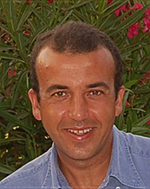 |
As defined in Wikipedia, Software Defined Networking (SDN) is about “decoupling the system that makes decisions about where trafficis sent (the control plane) from the underlying systems that forward traffic tothe selected destination (the data plane)”. In this introductive talk, we will overview the motivation that has lead, less than a decade ago, to the emergenceof SDN as well as the reasons and the pragmatic compromises (most notably inthe OpenFlow Design choices) which have made it viable. The talk will then discuss recent evolution, deployment perspectives, relation with emerging network function virtualization technologies, as well as current limitations and open research issues, with specific focus to the programmability challenges of the data plane.
|
| June 19. 18:00-19:15 | Poster session I |
|
|
| June 19. 21:00-23:15 | Lab 1 and Lab 2 training |
| June 20. 09:00-10:30 | Guillaume Pierre (Irisa): From Data Centers to Fog Computing: The Evaporating Cloud |
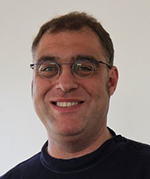 |
Cloud computing data centers are composed of very powerful computing nodes connected by reliable backbone networks. However, these resources are concentrated in a small number of a data centers. The latency between an end user and the closest available cloud data center comes in the range of 20-150 ms. A number of latency-sensitive applications (e.g., augmented reality) require extremely low end-to-end latencies and therefore cannot make use of traditional cloud platforms. Fog computing therefore aims to complement traditional cloud infrastructures with additional resources located extremely close to the user, within a couple of network hops. This requires one to distribute machines in a very large number of geographical locations so computation capacity is always available in immediate proximity of any end user. In this presentation I will discuss the application scenarios where fog computing is or isn't useful, and the architectural challenges one needs to face when designing the next-generation fog computing architectures.
|
| June 20. 11:00-12:30 | Giuseppe Bianchi (U. Rome II): Data Plane programmability: the next step in Software Defined Networking |
 |
Software-Defined Networking (SDN) emerged as an attempt to introduce network innovations faster and to radically simplify and automate the management of large networks. Most of the traditional SDN work promoted theneat separation of the “smart” network control and management plane from the“dumb” packet forwarding plane. However, we believe that this rigid, physical, separation is by no means a conceptual principle, but it is just the consequence of the inability to emerge, so far, with pragmatic device-level programming interfaces more expressive than OpenFlow, i.e., which permit to program and deploy inside the switch more complex and dynamic per-flow “behavioral rules” rather than static forwarding rules. In the talk, we discuss pragmatic and viable ways to formally describe stateful per flow processing while retaining platform independence and portability across different network devices and nodes.
We posit that the unprecedented ability to locally deploy, in each network switch, third-party programmed platform-agnostic control functions, not only questions the rigid control/data plane separation that so far has driven SDN efforts, but rather might even pave the road towards the viable return of some “active networking” ideas in the SDN arena. |
| June 20. 14:00-16:00 | Lab 1: Evaluating the OpenStack Behaviour |
OpenStack has become the de-facto solution to operate compute, network More info here. |
|
| June 20. 16:30-19:00 | Lab 2: SDN forwarding and switching. |
This is a hands-on lab showing how two major SDN controllers, Open Network Operating Sytem (ONOS) and OpenDayLight, work, that is, how network topology is discovered, how switching rules are installed and used, with some simple applications. More info here. |
|
| June 20. 21:00-23:15 | Lab 1 and Lab 2 follow-up |
| June 21. 09:00-10:30 | Fabien Hermenier (Nutanix Inc): VM scheduling by the people, for the people |
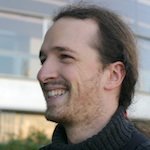 |
The VM scheduler continuously deploys VMs to appropriate physical servers according to the established Service Level Objectives. The VM scheduler is the cornerstone of the good functioning of an IaaS cloud. The provider bases his offering and the clients base their requirements on its features. Developing a VM scheduler is however a challenging task. Above all, the developer must overcome the theoretical foundations of the problem and their consequences over the problem scalability. He must also provide an architecture that is flexible enough to support the evolving requirements of the users. The quality of a scheduler might then always be the consequence of a good match between its reasoning capabilities, the infrastructure particularities and the workload profile. It might then be vain to look for the perfect pre-packaged VM scheduler and start to package its own.
|
June 21. 11:00-12:30 | Jérémie Leguay (Huawei): Online and Global Network Optimization with SDN |
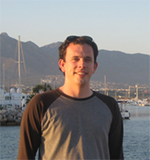 |
The computation power of SDN controllers fosters the development of a new generation of control plane that uses compute-intensive operations to automate and optimize the network configuration across layers. From now on, cutting-edge optimization and machine learning algorithms can be used to control networks in real-time. This formidable opportunity transforms the way routing systems should be conceived and designed. This talk analyzes the ongoing transformation of network architectures and surveys various emerging SDN technologies (protocols, software architectures) under the light of their potential for real-time network optimization. It then reviews algorithm challenges for the next generation of routing platforms (e.g., admission control, routing optimization, configuration updates, monitoring). In particular, it shows that the main challenge is the resolution of combinatorial problems at large-scale and in an online fashion. As an illustration, it goes through a number of recent algorithmic contributions to solve both offline and online problems at scale using tools from optimization and control theory. Finally, it reviews promising directions on robust routing and distributed computing under investigations. |
| June 21. 21:00-23:15 | Lab 1 and Lab 2 follow-up |
| June 22. 09:00-10:30 | Vania Conan (Thales): NFV Orchestration |
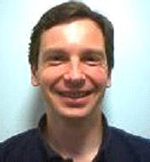 |
NFV orchestration is key in the emergence of virtualized networks: it comes as a complement to the Software Defined Network paradigm and represents the next step towards automating network management. In a virtualized network setting the network functions (routing, name resolution, firewalling, network acceleration, …) are provided as software packages, Virtual Network Functions (VNFs). This changes dramatically how network management must be addressed, as it must adopt the standard practice of software development and operations. This also opens new opportunities to achieve in practice the long standing goal of automating network management. In this talk we review the main challenges of NFV orchestration, VNF chaining and illustrate the benefits that this approach can bring to network management. The talk draws on example work done in the lab on on-line and off-line VNF placement and chaining using game theoretic approaches. It concludes with future perspectives to further improve network elasticity with adaptive NFV orchestration.
|
| June 22. 11:00-12:30 | Shadi Ibrahim (Inria): Big Data Processing in the Cloud: Hadoop and Beyond |
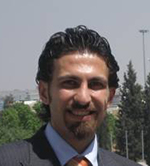 |
Data volumes are ever growing, for a large application spectrum going from traditional database applications, scientific simulations to emerging applications including Web 2.0 and online social networks. To cope with this added weight of Big Data, we have recently witnessed a paradigm shift in the way data is processed through the MapReduce model. First promoted by Google, MapReduce has become, due to the popularity of its open-source implementation Hadoop, the de facto programming paradigm for Big Data processing in large-scale data-centers and clouds. The goal of this talk is to serve as a first step towards exploring the Hadoop platform and also to provide a short introduction into working with big data in Hadoop. An overview on Big Data including definitions, the source of Big Data, and the main challenges introduced by Big Data, will be presented. We will then present the MapReduce programming model as an important programming model for Big Data processing in the Cloud. Hadoop ecosystem and some of major Hadoop features will then be discussed. Finally, we will discuss several approaches and methods used to optimise the performance of Hadoop in the Cloud. Finally, we will discuss the limitations of Hadoop and introduce new Big Data systems including Spark.
|
| June 22. 14:00-16:00 | Lab 3: Cloud orchestration |
Home made VM schedulers. More info here. |
|
| June 22. 16:30-18:00 | Lab 4: SDN forwarding and switching - routing and optimization. |
In this hands-on lab, we will explore forwarding state propagation and route computation in SDN by first implementing a reactive and a proactive forwarding information diffusion mechanism. Then we will implement various routing decisions. To understand the impact of each solution, we will compare them with the same benchmark distributed application and discover that depending on the scenario the performance of the application relying on the network may be really different. More info here. |
|
| June 22. 18:00-19:15 | Poster session II (best poster award announcement) |
|
|
| June 22. 21:00-23:15 | Lab 3 and Lab 4 follow-up |
| June 23. 09:00-10:30 | Paolo Bellavista (U. Bologna): Edge Computing for IoT Application Scenarios |
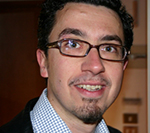 |
The number of connected devices worldwide continues to grow and is forecast to triple by the end of 2019, from 15 to 50 billion. It starts to be widely recognized that this continuous and exponential growth will inevitably forcetowards a deep transformation of how we organize, manage, and access virtualized distributed resources, which we currently identify with the global location-transparent cloud. This transformation is particularly central for IoT application scenarios, where strict latency and reliability requirements, e.g., for prompt actuation of control loops, are crucial to determine even theoverall stability and behaviour of the system. In this perspective, edge computing (or fog computing, or cloudlets) is expected to play a very relevant role in future IoT infrastructures and in efficient IoT-to-cloud integration in wide-scale deployment environments. The objectives of this talk will be to introduce the primary advantages and stillopen technical challenges related to edge computing design, implementation, anddeployment in application scenarios with strict latency and reliability requirements, e.g., in Industry 4.0 production plants. In addition to modelsfor related architectures, for hierarchical locality management, for data aggregation and trigger determination at both sensors/actuators and edge nodes,for distributed control functions at both cloud and edge nodes, the course willdiscuss about the state-of-the-art of dynamic distribution of processing functions in the three layers of a node-edge-cloud IoT deployment environment .The illustrated concepts will be accompanied by practical examples (e.g., using distributed geometric monitoring functions that dynamically migrate as Docker-containerized edge computing functions), as well as a fresh overview ofmechanisms/technologies/standardization directions that can be considered towards the vision of an efficient edge computing support for “industrial-grade” IoT applications. |
| June 23. 11:00-12:30 | Lucas Nussbaum (Loria): Scaling the Experiments |
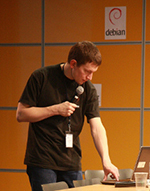 |
There is a wide range of options to experiment on distributed systems
and networking. Simulators running on a laptop or self-made testbeds are
sometimes enough, but our field usually targets large to very large
systems with potentially millions or billions of elements. In such a
case, relying on a laptop or a self-made testbed is impossible. To scale
up our experimental research, we can rely on larger-scale
infrastructures and testbeds. In a first part, this talk will provide an overview of the landscape of infrastructures and testbeds supporting experimental research in distributed systems and networking. In a second part, we will focus on SDN/NFV experimentation, and will provide some feedback about the current state of available experimentation tools targeting large scale systems. |
LABS
Lab 1: Evaluating OpenStack Behaviour
Responsibles: Ronan-Alexandre Cherrueau, Dimitri Pertin (LS2N).
OpenStack has become the de-facto solution to operate compute, network
and storage resources in public and private clouds. However,
developers and scientists are facing challenges when it comes to
deploy and benchmark such a complex software stack. This lab aims at
exploring EnOS, a holistic framework leveraging containers to conduct
easy and reproducible evaluations of different OpenStack deployments.
In particular, we will use EnOS to deploy, operate, benchmark and
analyse a basic OpenStack instance.
Further information at http://enos.readthedocs.io/en/latest/
Lab 2: SDN forwarding and switching
Responsibles: Kamel Attou, Chi-Dung Phung, Stefano Secci (LIP6).
This is a hands-on lab showing how two major SDN controllers, Open Network Operating Sytem (ONOS) and OpenDayLight, work, that is, how network topology is discovered, how switching rules are installed and used, with some simple applications.
For the lab training sessions, four related ONOS hackathon projets are proposed:
- Network load balancer using the ONOS RESTful API.
- Distributed controllers using HA proxy.
- Operating a LISP network with ONOS.
- Inter-working between ONOS and OpenStack.
Lab 3: Cloud orchestration
Responsible: Fabien Hermenier (Nutanix Inc).
More details here.
Lab 4: SDN forwarding and switching - routing and optimization
Damien Saucez ( Inria).
With Lab 2, you discovered that with the advent of Software Defined Networking (SDN) comes great freedom in the way you manage your network. However, it also comes with two great questions: 1) how and when to propagate forwarding information in the network and 2) how to compute routes.
In this hands-on lab, we will explore these two points by first implementing a reactive and a proactive forwarding information diffusion mechanism. Then we will implement various routing decisions.
To understand the impact of each solution, we will compare them with the same benchmark distributed application and discover that depending on the scenario the performance of the application relying on the network may be really different.
Due to the short time of the lab session and to focus on the concepts, the lab will be realised on a simple home-made SDN controller written in Python that abstracts the technology used to implement SDN. We will propose for the hackathon to implement these concepts in ONOS.
If you attend and you want to propose a hackathon project for the labs training sessions taking placeduring the evening, please drop a mail to rescom2017@rsd-cloud.lip6.fr.
CALL FOR POSTERS
We encourage young researchers to present their work with a poster. Posters may be accompanied by technical demonstrations not requiring Internet access and additional screens. Researchers will present their work during a poster session on Monday, June 19, and Wednesday, June 21. Students will benefit from an exceptional forum composed of young and senior researchers from both communities to exchange ideas and new projects around their work.
We ask to submit the poster proposal for review with a title and an extended abstract of up to two pages to the school committee.
Extended abstracts must be submitted in PDF following the IEEE conference format to https://easychair.org/conferences/?conf=rescom17 before May 15, 11:59PM CET.
The proceedings with the poster papers are available here.
REGISTRATION
| Category | Registration fee |
| |
|
| University / public research institution participant | 700 Euro TTC |
| Company participant | 850 Euro TTC |
*limited number of places at this rate.
Free registration for CNRS staff.
All prices include accommodation, meals, social event and school access.
A certificate of attendance will be produced for each PhD student.
Click here to register: registration platform
For registration problems please write to rescom2017@sciencesconf.org
ORGANIZATION COMMITTEE
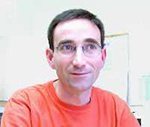 |
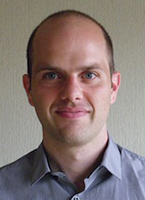 |
 |
 |
| André-Luc Beylot IRIT, Toulouse. |
Mathieu Bouet Thales, Genneviliers. |
Fabien Hermenier Nutanix Inc, Nice. |
Adrien Lebre LS2N, Inria, Nantes. |
 |
 |
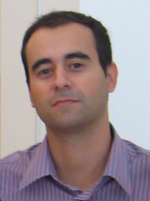 |
|
| Thomas Noel iCUBE, Strasbourg. |
Benoit Parrein LS2N, Nantes. |
Damien Saucez Inria, Sophia Antipolis. |
Stefano Secci LIP6, Paris. |
Questions: rescom2017@rsd-cloud.lip6.fr
LOCAL ARRANGEMENTS COMMITTEE
Rémy Durand, LS2N, Université de Nantes
Salima Hamma, LS2N, Université de Nantes
Adrien Lebre, LS2N, Inria, Nantes
Rémi Lehn, LS2N, Université de Nantes
Benoît Parrein, LS2N, Université de Nantes
Dimitri Pertin, LS2N, Inria, Nantes.
SPONSORS
 |
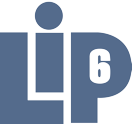 |
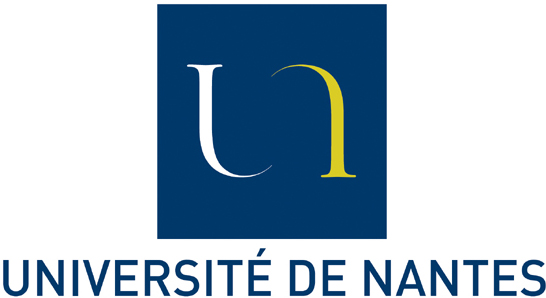 |
||
 |
 |
|||
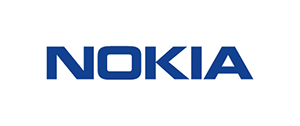 |
 |
|||
 |
||||
Want to sponsor? Drop an email to rescom2017@rsd-cloud.lip6.fr
ASSOCIATED RESEARCH PROJECTS
 |
 |
 |
PHOTOS
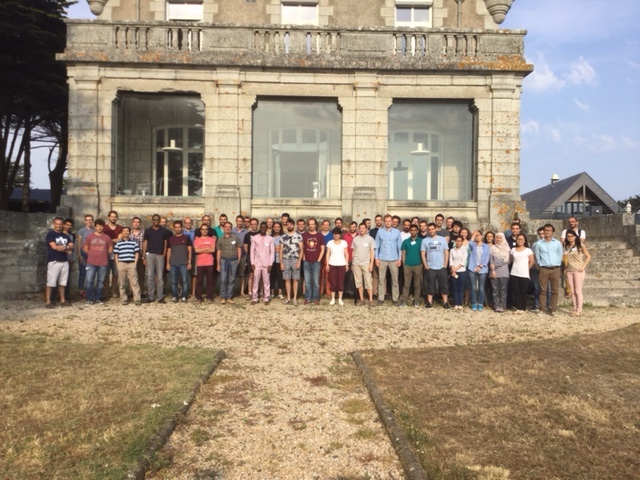
Previous RESCOM summer schools.
